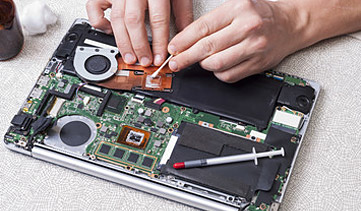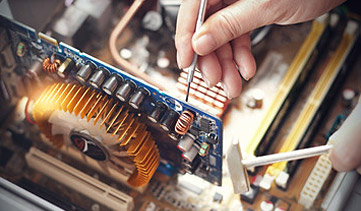 http://info@tekcure.com
http://info@tekcure.com http://info@tekcure.com
http://info@tekcure.com
Is there a red X over the wireless network icon in the Windows taskbar? What about on your phone – does it report that there isn’t a wireless connection? Maybe you’re told that there are no wireless networks available (when you know there are).
Wireless connection problems can be incredibly frustrating, especially when they happen at the worst possible time, like when you need to send an email to meet a deadline and are working on the road with no access to tech support.
Don’t worry, though, because Wi-Fi problems can often be fixed rather easily. We’ll go over all your options below.
Note: Some other common types of Wi-Fi issues, especially for remote workers, include dropped signals and spotty connections, a valid wireless connection but no internet connection, and wireless and internet connection but no VPN access.
On some devices, wireless capabilities can be turned on and off via a physical switch on the edge of the device. At the same time, most all devices let you toggle Wi-Fi on/off through the software.
Check both of these areas first, because that will save you lots of troubleshooting time if the wireless connection is simply disabled.
If you’re on a laptop, look for a hardware switch or special function key that can turn the wireless radio on and off. It’s relatively easy to flip it by accident, or maybe you did it on purpose and forgot. Either way, toggle this switch or hit that function key to see if this is the case.
If you’re using a USB wireless network adapter, make sure it’s plugged in correctly. Try a different USB port to be sure the port isn’t to blame.
Another place to look is within the device’s settings. You might need to do this on your phone, desktop, laptop, Xbox, you name it – anything that can turn Wi-Fi on and off will have an option to do so.
For example, in Windows, within Control Panel, look for the “Power Options” settings and choose Change advanced power settings to make sure the Wireless Adapter Settings option is not set to a “power savings” mode. Anything but “Maximum Performance” might negatively affect the adapter’s performance and affect the connection.
Also, check for a disabled wireless adapter from the list of network connections in Control Panel. To do that, execute the control netconnections command in Run or Command Prompt, and check for any red networks listed there.
Yet another place where system settings could be causing no Wi-Fi connection is if the wireless adapter has been disabled in Device Manager. You can easily enable the device again if that’s the cause of the problem.
If you have an iPhone, iPad, or Android device that shows no wireless connection, open the Settings app and find the Wi-Fi option. In there, make sure the Wi-Fi setting is enabled (it’s green when enabled on iOS, and blue on most Androids).
Is there a red X over the wireless network icon in the Windows taskbar? What about on your phone – does it report that there isn’t a wireless connection? Maybe you’re told that there are no wireless networks available (when you know there are).
Wireless connection problems can be incredibly frustrating, especially when they happen at the worst possible time, like when you need to send an email to meet a deadline and are working on the road with no access to tech support.
Don’t worry, though, because Wi-Fi problems can often be fixed rather easily. We’ll go over all your options below.
Note: Some other common types of Wi-Fi issues, especially for remote workers, include dropped signals and spotty connections, a valid wireless connection but no internet connection, and wireless and internet connection but no VPN access.
On some devices, wireless capabilities can be turned on and off via a physical switch on the edge of the device. At the same time, most all devices let you toggle Wi-Fi on/off through the software.
Check both of these areas first, because that will save you lots of troubleshooting time if the wireless connection is simply disabled.
If you’re on a laptop, look for a hardware switch or special function key that can turn the wireless radio on and off. It’s relatively easy to flip it by accident, or maybe you did it on purpose and forgot. Either way, toggle this switch or hit that function key to see if this is the case.
If you’re using a USB wireless network adapter, make sure it’s plugged in correctly. Try a different USB port to be sure the port isn’t to blame.
Another place to look is within the device’s settings. You might need to do this on your phone, desktop, laptop, Xbox, you name it – anything that can turn Wi-Fi on and off will have an option to do so.
For example, in Windows, within Control Panel, look for the “Power Options” settings and choose Change advanced power settings to make sure the Wireless Adapter Settings option is not set to a “power savings” mode. Anything but “Maximum Performance” might negatively affect the adapter’s performance and affect the connection.
Also, check for a disabled wireless adapter from the list of network connections in Control Panel. To do that, execute the control netconnections command in Run or Command Prompt, and check for any red networks listed there.
Yet another place where system settings could be causing no Wi-Fi connection is if the wireless adapter has been disabled in Device Manager. You can easily enable the device again if that’s the cause of the problem.
If you have an iPhone, iPad, or Android device that shows no wireless connection, open the Settings app and find the Wi-Fi option. In there, make sure the Wi-Fi setting is enabled (it’s green when enabled on iOS, and blue on most Androids).


